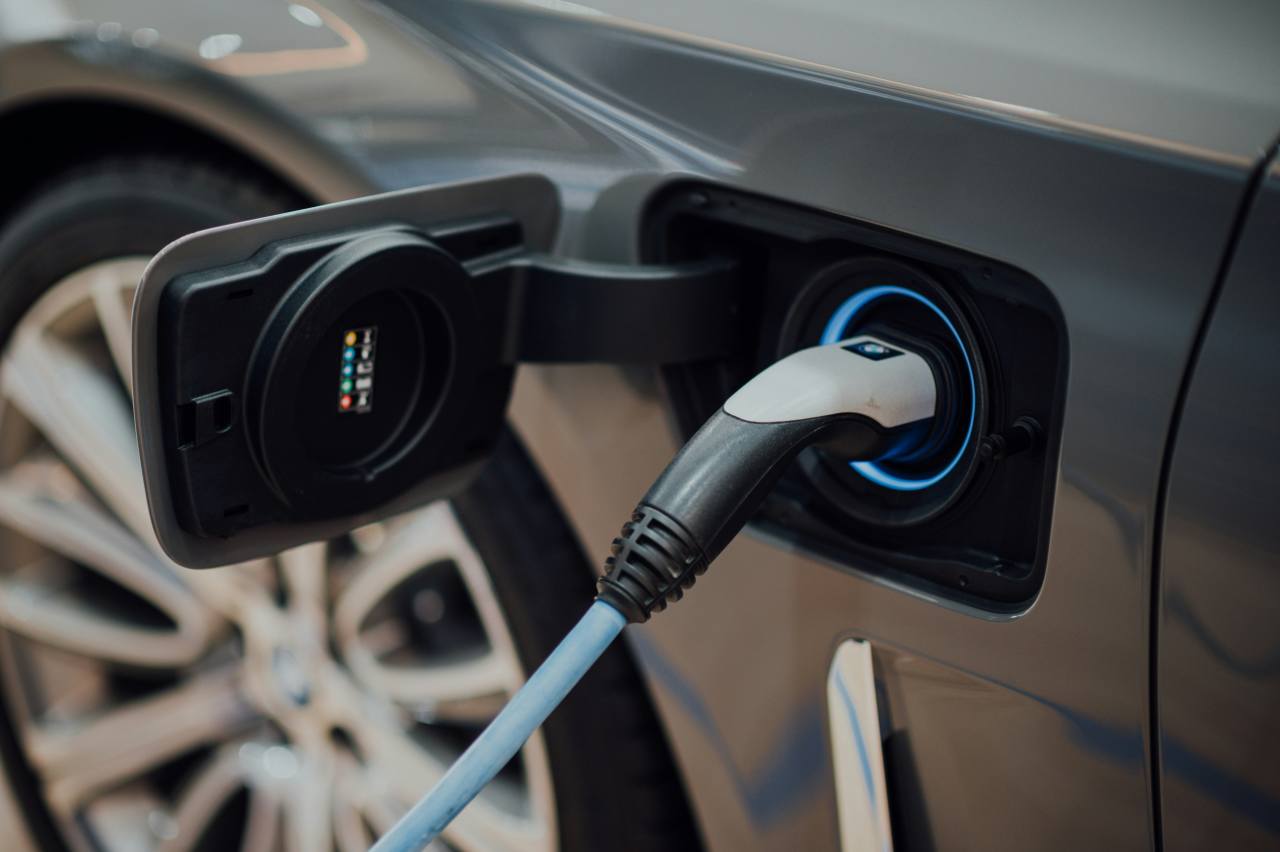Subaru’s XV has become as much a pillar of the Japanese brand as storied nameplates like Impreza and Forester. Its high-riding, all-wheel drive characteristics have proven to resonate well with Australia’s adventurous populace.
If Toyota’s successful hybrid models have proven anything, though, it’s consumer sentiment is changing, and electrification is becoming a hot issue for new car buyers.
My new long-termer, the Subaru XV Hybrid S, is Subaru’s first mainstream foray into hybrid drive, and it comes at an opportune moment of pivoting buyer demand.
Can it unite the unique characteristics which have made Subaru so uniquely loved in Australia with new-age fuel-saving electrification, or is this brand’s first take on hybrid one worth skipping? I’m spending four months with this one to find out.
Subaru XV 2021: Hybrid S Awd
| Engine Type | Flat 4, 2.0L |
|---|---|
| Fuel Type | Unleaded Petrol/Electric |
| Fuel Efficiency | 6.5L/100km (combined) |
| Seating | 5 |
| Price From | $28,270 - $34,100 |
| Safety Rating |
|
Part 1 - January
My XV Hybrid S arrived just after a two-week stint in the petrol equivalent XV 2.0i-S, and just after a three-month long-term review of the Toyota Corolla ZR Hybrid, which won myself and my partner over in a big way.
With many thoughts on these well-placed comparison models, I was ideally placed to analyse the XV both as a member of Subaru’s range, and how it sits in the world of hybrids.
The XV had also arrived just in time for a planned trip from Sydney to the coastal town of Forster, NSW, a round-trip of over 600km. Plenty of time to get to know it well from the outset.
.jpg)
Hybrid S we’ll be living with for over three months wears a before-on-road cost (MSRP) of $40,790.
Firstly though, a little on the car itself. You can read my comprehensive review of the Subaru XV range here, but our top-spec XV Hybrid S we’ll be living with for over three months wears a before-on-road cost (MSRP) of $40,790.
This places it a fair bit above the already pricey Corolla ZR Hybrid ($34,965) despite being similarly sized.
_0.jpg)
The reality is, however, the XV plays in the small SUV segment, and hybrid rivals here include primarily the Toyota C-HR Koba Hybrid ($37,165 – 2WD only) and Toyota Yaris Cross Urban Hybrid ($37,990 – AWD), but there is also a litany of popular non-hybrid rivals like the Mitsubishi ASX Exceed (tops-out at $33,490 – 2WD only) or Hyundai Kona N-Line ($42,400 – AWD).
Although the Subaru looks a bit expensive compared to some of those competitors, it’s worth noting apart from the physically smaller Yaris Cross it’s the only one to offer both all-wheel drive and hybrid.
In the coming years there will undoubtedly be an explosion of hybrid options in this space, but for now at least, the XV is a little ahead of the curve.
Subaru calls this iteration of its hybrid tech ‘e-Boxer’ and it has some key differences to Toyota’s renowned ‘Hybrid Synergy Drive’.
.jpg)
Where the Toyotas mount electric motors on individual axles (front in the case of the Corolla and C-HR, rear in the case of the Yaris Cross), Subaru’s signature all-wheel drive system has seen the brand instead mount its electric motor inside the XV’s continuously variable automatic transmission.
The motor is also technically weaker than the one in the Corolla providing fully electrified power of just 12.3kW/66Nm, although the XV sources its power from a lithium-ion battery pack under the floor compared to the Corolla’s older nickel-hydride type.
Our hybrid arrives in an eye-catching 'Lagoon Blue Pearl', the signature colour for Subaru’s Hybrid range, although aside from this it’s hard to tell from the outside this XV is particularly special. It wears some e-Boxer badging and has some silver highlights over its petrol-only siblings.
One thing which has always been appealing about vehicles sitting on the most recent Subaru Global Platform (XV, Forester, Impreza, and Outback) is how great they feel behind the wheel.
.jpg)
All Subarus have spacious interiors and nice finishes which often feel a cut above their price tags. Visibility and adjustability are also excellent, and personally I’m a fan of Subaru’s chunky interior design language which is quite different from many of its rivals. I think many buyers will also be enamored by its ride height and big comfortable seats
.jpg)
After hopping out of the compact Corolla, I was also happy to see plenty of cabin storage options, a large centre console box, and the great visibility and ride height are a welcome boost to usability, too.
Our initial 600-plus kilometre return trip to Forster in the XV was a telling one. Only away for four days in total, our two weekend duffle bags, my usual photography pack, and two bags of drinks and groceries filled the small 345-litre (VDA) boot at an alarming rate.
.jpg)
I found you can technically fit our whole set of CarsGuide demo cases if you remove the sliding cover and fill almost to the top, although doing so will compromise your rear vision. The hybrid versions have a slightly larger boot (up 35-litres on the petrol car) but have a fixed boot floor height with no spare wheel underneath.
Fine for a couple for trips of about a week, but add a dog? Kids? Parents or grandparents? I can see this lack of cargo space becoming a problem rather quickly.
I’m a fan of the way the XV drives. It has always felt planted and sturdy, with loads of grip for all conditions.
For the 2021 model year, the brand has also refined the front suspension tune, and in hybrid guise some of the nastier, thrashier characteristics of the XV’s underpowered 2.0-litre horizontally-opposed boxer engine are blunted.
It’s still a comparatively noisy affair, however, as accelerating to 100km/h out of the entry ramp soon revealed, with revs soaring close to the redline easily when pushed.
Aside from a little noise from the engine and the road though, the XV is a comfortable freeway cruiser.
.jpg)
The seat comfort remained great despite nearly four hours behind the wheel in one day, and Subaru’s adaptive cruise control is an excellent example of the tech, pairing nicely with the lane keep assist for a smooth, predictable and no-nonsense journey.
A largely freeway-based first month is hardly a great test of this car’s hybrid capability, where the tech is at its worst.
We’ll get into more detail on the e-Boxer hybrid drive in the next instalment, but for now I’ll just note how seamless and ‘normal’ it feels next to the petrol cars. You’d hardly notice the system is in place at all.
Does it save you much fuel? Even Subaru’s numbers wouldn’t suggest much (just 0.5L/100km down on the petrol version), and after our first month covering just over 750km the XV returned a reasonable, but hardly impressive fuel figure of 7.7L/100km.
.jpg)
Just as I was looking forward to spending some more time in the XV around town, tragedy befell our test car. It was rear-ended!
In a true testament to today’s sturdy construction and the effort gone into battery cell protection, our Subaru had but a scratch on its rear bumper compared to the offending 2010 i30’s caved-in front-end.
Nobody was injured and the XV drove away from the collision without any issues. A few days later, a Subaru representative picked our car up for repairs. What happens next? Sorry, you’ll have to wait for the next instalment to find out.
Acquired: January 2021
Distance travelled this month: 775km
Odometer: 1290km
Average fuel consumption for January: 7.7L/100km
Part 2 – March
I know what you’re thinking. Hang on a minute, didn’t you skip a month? After leaving us on a cliff-hanger from the last instalment?
Yes, we did skip a month, because it took a month to get our XV back. In a further twist, this car isn’t even the same one which was crashed into.
So, what happened? While you might be thinking that the little crash which left our initial car with just a scratch on the bumper may have been enough to write it off thanks to some complexity relating to its rear-mounted lithium battery pack, it turns out that’s not the case, at all.
Subaru tells us the battery pack is specially reinforced on hybrid models for the event of such a collision, and that our car was mechanically fine.

There was just a bit of a wait time on the spare parts required to replace the bumper. It was faster if the brand just expedited another vehicle from its fleet for us to get straight back to testing.
We’re sure part of this is to do with the limited supply of parts and cars coming out of the only Subaru plant which services Australia and the pacific in Ota, Japan. But the brand tells us its own fleet goes right to the back of the queue with customer’s repairs taking priority. Fair enough.
Our new car wasn’t quite as fresh as the old one, with a few more kilometres on the odometer, but other than that it’s in exactly the same configuration. We reset all the computers to start our fuel numbers over again, and off we went.
During the month of March my partner and I managed to cover some distance in our replacement XV, too.

From Sydney it’s been up and down the central coast (a 150km round trip) twice, plus a trip to Canberra for the Hyundai Nexo launch (a 600km round trip), so lots of freeway kilometres, but we also made sure to spend at least a week puttering around town in it to give the hybrid system a chance to shine.
Did it, though? You’ll recall our fuel number from the first month’s testing which covered almost 800km was around 7.7L/100km against an official/combined number of 6.5L/100km.
In fact, during our first month with the replacement hybrid, we had a regular 2.0-litre produce an even lower fuel consumption figure of 7.2L/100km over just a week of mainly urban testing.
Over a dash-reported 949km for our second month, I managed to get the hybrid down to 7.1L/100km. It’s an improvement, but a very gradual one.

It’s so frustrating how little you can use the electric motor in this car! While it resides in the transmission, as opposed to on the axle like Toyota systems, its functionally very similar. Light accelerator input equals more time on purely electric drive.
Only, the XV will kick the engine on at the mere suggestion of a hill. I can get most Toyota hybrids up my steep driveway without the engine turning on, but this XV is having none of it.
I assume it’s because the meagre 12kW available struggles to deal with the weight of pulling all four wheels. I’ve adjusted my accelerator habits in this car to make the most of its limited electric drive.
Even on the flat you can use it to hold speeds of up to 60km/h, but it requires a featherlight touch of the pedal and utmost discipline.

I don’t think it’s saving me much fuel, but it’s a little daily challenge to get it down a strip of road without switching the engine on at any rate. I’m hoping to bring the consumption number down further still.
Compared to the silence of Toyota hybrids, which will give you a minute or two of purely electric drive straight out of the driveway before warming the engine up, I still cringe a little when the Subie’s signature boxer thrashes to life when you hit the Start button. More electric, please!
I continue to enjoy the way the XV drives. Even though it’s not the most convincing hybrid, it’s a comfortable car to get around in every day.
I find it’s a nice mix of SUV ride height with the footprint of a hatch. It fits in 'small car' spaces in parking lots while still feeling big and chunky on the road. A tough feat which not every small SUV executes as well.

I have started to notice a few things about the ride, though. While there’s no doubt it’s more than capable of dealing with the potholes, speed bumps, and corrugations of suburbia in relative comfort, there’s something about its rebound on a horizontal axis that’s a little ungainly.
Hit a patch of uneven tarmac at 50+ km/h on, say, just one of the front or rear wheels, and the cabin swings back and forth a little too much.
Perhaps it’s a combination of this car’s stiff SGP (Subaru Global Platform) underpinnings, tall ride height, and suspension that tries to give a mix of roadholding and capability.
It’s just missing the rigid control of the Corolla on the blacktop. I’m hoping to get the XV on some more unsealed surfaces in the next instalment to put its suggestion of flexibility to the test, so check back to see how that goes.

The abundance of cabin space and storage options continues to be a welcome improvement over our previous Corolla long termer, and even my tallest friend fits in the back seat with enough head- and legroom.
The big rear doors even open much wider than the Corolla, allowing easy access for loading objects, or more often in our case, canine friends.
As a suburban commuter, though, the XV hybrid is a good fit, even if the 'hybrid' part of the equation seems to be limited.
Acquired: January 2021 (replaced in March with a new car)
Distance travelled this month: 949km
Odometer: 2455km
Average fuel consumption for March/April: 7.1L/100km.
Part 3 - April/May
The XV had a quiet two months in April and May so we'll lump them together, and there seemed little more to learn about this hybrid lifted hatch, although its ease of use and depth of ability was always appreciated when we needed to call on it.
These two months were spent largely milling about town, down to the shops, and doing the short sprint to nearby relatives. The Subie was largely relegated to kicking around the ‘burbs, and while it didn't have as much of an opportunity to stretch its legs, it was still a bit disappointing to see the hybrid system fall short of the high expectations set by its Toyota rivals.
Regardless, these long tests are a great opportunity for comparison, pitting our long-termers against every other car which comes through the garage, and I have to say, the convenience and relative comfort of the XV was allowed to shine.
It's lots of small things about it that make it a pleasure just to use in the day-to-day. The seats are comfortable, and the XV is at the perfect height to slide in and out of with ease. I can slide into the seat without needing to lean down, while it's not too high that my much shorter partner needs to climb up into it.
Visibility and seating position continued to prove just right for the daily grind, comparing well to most cars we had through in the same time period.
Of particular note though is the ergonomics of all the controls. While I think the XV could potentially age poorly due to its overwhelming array of screens in the cabin, the accessibility of all the buttons and toggles, as well as the large touch elements on its 8.0-inch screen always made it a pleasure to use.
The no-nonsense approach of having dials for everything and a sensible array of controls on the steering and centre console work well, especially compared to newer models which have started to favour pure touch interfaces.
A prime example during our time with the car was the eighth generation Golf. While there was so much to like about VW's latest hatch offering, one thing that proved grating when coming out of the XV was how tricky the multimedia and climate functions could be to use with only touch panels.
The XV might be a bit old-school in this way, but it's just objectively easier to use while the car is in motion.
One area became an issue for the XV, however, is the dated tech, compared to not just its traditional rivals, but newcomers, too.
Subaru is asking north of $40,000 for this small SUV, yet despite three screens there's no digital dashboard.
More and more rivals are offering wireless CarPlay, USB-C connectivity, or wireless charging, and while these are luxuries, it reflects poorly that this pricey hybrid (only just updated this year) still shows no signs of a cabin tech upgrade.
That having been said, you pick your battles. Want an easy to use car? The XV is definitely that. Want a car with all of today's bells and whistles? You'll have to look elsewhere.
On the fuel front, two months of city driving hasn't been kind to our hybrid. Instead of evening out as I hoped it would at the end of last month's update, the XV's consumption began to climb, finishing out in May after 622km at 7.4L/100km, a mild rise on the 7.1L/100km we pulled at the end of March.
Acquired: January 2021 (replaced in March with a new car)
Distance travelled in April and May: 622km
Odometer: 3077km
Average fuel consumption for April and May: 7.4L/100km
Part 4 - June
During our final month with the XV, I decided to send it off with a trip which is suited its demeanour and abilities.
We plotted out a 1000-plus kilometre drive over the course of a long weekend, travelling from Sydney, spending a night in the ACT, then traversing the Snowy Mountains the next day.
This would be a real stress test of this car's cabin comfort and breathless engine, but it would also be interesting to see if it could pull a better fuel consumption number in freeway running than it returned around town the previous month.
.jpg)
Before we set off, it was again alarming how little space is in the boot once our weekend's worth of belongings were packed.
Two duffles, and some photography gear was enough to fill the boot lengthways, and while you could easily fit an extra travel case if you packed a bit more efficiently, it leaves no room for a pram if you're a new parent, and generally limited room for more than two adults.
On the freeway the XV reminded me of how good it is. The seats remained comfortable for the entire duration of our trip, which can't be said for every rival, and the adaptive cruise system strikes an excellent. Convenient without being overbearing.

The multimedia is easy to use, and the light, organic steering makes this car easy to direct, but not tiring to steer.
For part of our trip we took the XV on a section of wet, unsealed terrain to explore some caves, and this is where the car's abilities were on show.
Although the road seemed slippery and rutted, the XV's long suspension travel, permanent all-wheel drive, and comfortable ride kept everything well and truly under control.

In some ways, this little SUV comes alive off the tarmac, inspiring a kind of confidence you wouldn't otherwise have in a regular hatch, or even many less capable small SUVs.
Still, I was conscious of watching out for tree branches and nasty rocks, as the hybrid is served without a spare wheel. I didn't particularly feel like attempting to repair a puncture in the mud and rain.
While it felt comfortable and safe on the multiple surfaces covered on our trip, there are still some downsides for open road driving.

The cabin is noisy above 80km/h, making it hard for the average quality stereo to keep up with it, and an unexpected annoyance highlighted on this trip is the cropped 48-litre fuel tank.
While the hybrid system adds next to no benefit for such a drive, it was annoying to have to fuel this car up no less than three times to cover the distance.
I'm sure if it were the non-hybrid, which has similar open-road fuel consumption, but a larger 63-litre fuel tank, we would have been able to complete the trip with only two fills.

Fuel consumption, measured at the pump for the final month, was neither here nor there. The XV managed to clip 0.1L/100km off of its number from last month with freeway kilometres instead of urban ones.
It's telling that this car always performs better on the open road than it does around town. The opposite of Toyota's hybrids, and not a great reflection on Subaru's frustratingly limited application of electrification in this car.
Despite some flaws, I was still impressed I could hop out of the XV after 14 hours behind the wheel over a three day period and still find it comfortable and easy.

After nearly six months, some drama, and 3000km, our XV returns to Subaru. For our next test we'll be going fully electric, living with a Nissan Leaf e+ for three months, so stay tuned to see how it compares!
Acquired: January 2021 (replaced in March with a new car)
Distance travelled this month: 1167km
Odometer: 4244km
Average fuel consumption for June: 7.3L/100km
Verdict
Can I recommend the Subaru XV Hybrid S? It's a car that delivers on the brand's promise of a city-ready SUV, that's comfortable on a more adventurous path. I enjoyed this car in both scenarios. However, I'm not convinced by the hybrid. It's not as slick or efficient as its Toyota rivals, and not nearly worth the extra spend.
So, I'll stand by my range review of the XV's latest update earlier this year. If you want to have the best bits of this car, just buy the 2.0i-Premium. It's the value option in the range.
Pricing Guides








.jpg)
.jpg)
.jpg)
.jpg)
.jpg)
.jpg)
.jpg)








































.jpg)




.jpg)
